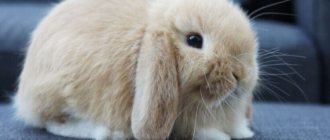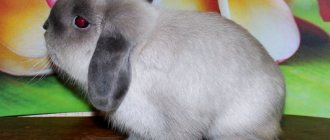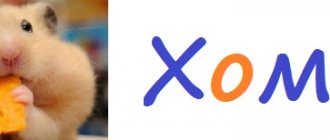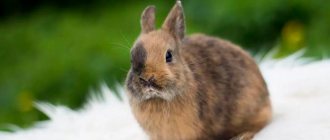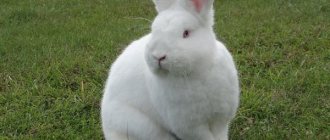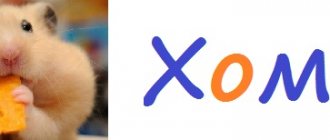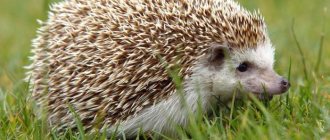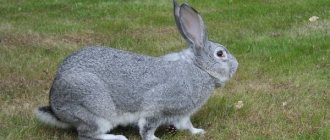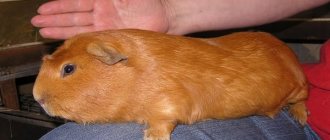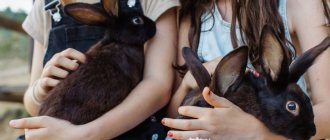Of the domestic and commercially bred animals, the most fluffy is the Angora rabbit, sometimes called the Angora lion, sometimes the lady rabbit.
Its pile is very soft. This name unites all breeds that are characterized by abundant fluffiness.
The fur rabbit originates from the capital of Turkey, Angora (now Ankara). In the 18th century, the animal came to Europe, and the furry animals were admired at the French court. In the 19th century, the Angora pet became known throughout the world. And in 1927, the Germans brought lady rabbits to our country.
Origin
Relatively little information is known about Angora downy rabbits. It is believed that the first mention of the variety was received in Turkey, where they were first purchased by sailors at the beginning of the eighteenth century. Since then, active breeding of the breed began in Europe. It is also a known fact that noble rich people and even the royal family acquired its representatives for their own pet menagerie.
In 1900, rabbits came to America, where breeders improved the breed by crossing with others. In the mid-twentieth century, two new varieties were obtained: English and French, and later the German Angora rabbit was registered. By the end of the twentieth century, three more were bred in Germany and France: dwarf, giant and satin.
In Russia today, the listed varieties of rabbits are also bred. Meanwhile, a white down breed was also bred in the USSR, the purity of whose blood they are trying to preserve to this day.
General information
Angora rabbits are spectacular representatives of the rabbit family. The main feature is increased fluffiness, the pile is soft and fluffy. Today there are about 55 million individuals. But few people know where and when these animals appeared.
Origin of the Angora rabbit
In France, in 1723, they first learned about rodents with long hair. A little later, sailors from Istanbul began to take them out of the country. This is how the breed began to spread throughout the world. The animals immediately won the love of privileged people and became domesticated. A little later they became a brand of some companies.
The first to realize that good profits could be made from Angora fur were the French. They were the first to create fur products from wool . The fur industry has been popular in the country for several centuries in a row. Napoleon Bonaparte also invested his funds in the promising industry.
Until the middle of the 20th century, France was the only country where down from this breed of rodents was produced on a commercial scale. Over time, China became the global fur production industry. Today, China produces more than 95% of the world's product.
Characteristics of the Angora rabbit
The size of the animal is small , which is why they are also called dwarf. The weight of rodents is small, only 3–4 kg. In some cases it can reach 6 kg. The weight of a newborn rabbit is 500 grams.
Description and characteristics of the Angora rabbit
Breeding Angora rabbits is preceded by the purchase of livestock. If the breed is intended to be bred, then it is especially important to purchase healthy animals that match the exterior.
General features of the breed:
- Rabbits of all subspecies of Angora have a shortened cylindrical body and a large head. The muzzle can be blunt or elongated depending on the breed.
- The ears are small, with fluffy tufts at the ends. The hairstyle depends on the breed, but most have long hair.
- All subspecies of rabbits have very fast claws. They are sharp and can cling tightly to the roots of trees and bushes. Because of this, rabbits' claws are cut 2 times a month.
- The fur covers the eyes, so it has to be carefully combed. Pooh should not cover your eyes.
Felting of wool, formation of tangles
Rabbits of almost all Angora breeds are prone to fur matting and the formation of pellets (mats). In foreign sources this phenomenon is called matting. The reasons for the formation of tangles on one side are long, soft fur. On the other hand, a thorough study of the structure of the fur made it possible to believe that in some breeds of downy breeds of rabbits, the hairs have a tendency to section and bifurcate the fur. Perhaps only the German downy angora is considered resistant to wool matting. Under the tangles, the thermoregulation of the skin is disrupted; allergic and atopic dermatitis and fleas can develop. It is impossible to eliminate the formation of tangles with medications; the only option is regular combing of the skin using a furminator, a special comb, or periodic haircuts. The haircut is carried out under general anesthesia, with the help of inhalation anesthesia, or you can get used to cutting hair using a special electric clipper, reminiscent of a hairdresser's haircut machine. The use of sedatives does not have a good effect, the rabbit only becomes more nervous.
Care
To ensure that the animal is always in perfect condition, it must be looked after. This will require some effort from the owner. The giant Angora rabbit loves to be groomed constantly. This should be done once a week. At the same time, animals do not really like moisture. Therefore, to prevent the wool from becoming dirty, it should be washed with special solutions that can be bought at a veterinary pharmacy.
Haircuts can be done once every two weeks. You can blow the wool with a hairdryer. This will help remove dead hair. For care, use scissors, slicker brushes or metal combs.
It is also important to pay attention not only to the animal itself, but also to the place where it lives. The rabbit loves to live outdoors. But at home it is possible to keep him in a cage. There he will breed his rabbits.
The cage must be washed regularly and any remaining food or waste products removed from it. If this is not done, the animal may catch an infection and get sick, as they are prone to this and can easily catch various infections. Treatment can be difficult and lengthy, as well as expensive.
Feeding
Rules and principles of feeding:
- The main food is concentrated feed mixtures, hay, vegetables. It is also fashionable to give crackers and dairy products. Every day, the diet should include seasonal fruits, greens, and juicy root vegetables.
- Rabbits need to be fed on time, otherwise they will chew inedible objects.
- Greens are given only in a limp form; they should lie down for a while. Rabbits happily eat alfalfa, reed, and hogweed.
- Along with the food, animals can receive vitamin and mineral supplements.
- Do not give moldy bread to rabbits.
- At the feeding site there should always be a drinking bowl of a special design so that the rabbit cannot contaminate it with food or its own feces.
Food bowls should be ceramic to prevent the rabbit from chewing them.
Feeding
Angora rabbits are herbivores. The following must be included in the animal menu:
- wheat;
- oats;
- barley;
- compound feed;
- dandelion leaves;
- sedge;
- clover;
- fruits (apples and pears);
- melons (pumpkin, melons, watermelons);
- vegetables (beets, carrots, etc.).
In winter, the angora's diet is supplemented with hay, boiled pearl barley and oatmeal. In summer, the animal is fed fresh, slightly dried grass. Fruits and vegetables are given to the rabbit both raw and heat-treated.
It is strictly forbidden to feed the Angora with the following products:
- White cabbage;
- poisonous plants (feather grass, buttercup, celandine, spurge, belladonna and datura);
- beans;
- bread;
- sweets;
- pickles.
Important! Wet grass is strictly contraindicated for the Angora rabbit. It sticks to the walls of the digestive tract and clogs the stomach and intestines.
Angora rabbit breeds
Angora rabbit is a common name for several varieties of animals with soft and delicate fur. The following breeds are distinguished:
- English. The smallest and fluffiest of all, the English rabbit looks like a large and soft ball. You can find a rabbit of any color: white or cream, chocolate and even black. Fur grows absolutely everywhere.
- French. Produced on an industrial scale. The fur is easy to comb out and is not found on the ears, face or front legs.
- Germanic. Large for the Angora breed, female rabbits and rabbits are exclusively white. Like the previous variety, the Germanic breed is often used in industry.
- Gigantic. They differ from other breeds in eye color: representatives of the giant breed have blue or red eyes. The color of the coat is white, there are small tassels on the ears.
- Downy. Developed by Russian scientists. A down breed rabbit can be either white or other colors. The main advantage of the breed: downy rabbits are adapted to Russian weather conditions.
| Breed name | Weight | Amount of fluff (per year) |
| English | 2.6-2.8 kg | 450 g |
| French | 3 kg | 550 g |
| German | 4-5 kg | 1.5 kg |
| Gigantic | 4-5 kg | 1.2 kg |
| Downy | 2.6-4.6 kg | 500 g |
Productivity of breeds
Downy Angora rabbits of all varieties are capable of producing up to one and a half kilograms of pure fluff per year. At the same time, animals reach a weight of up to six kilograms, which allows slaughtering to produce not only high-quality fur for production, but also tasty, healthy meat that is perfectly absorbed by the body.
Rabbits are distinguished by their high precocity. So, by the age of four months their weight reaches two kilograms. The simplicity of maintenance is explained by its kind and peaceful disposition.
Aviary maintenance
When breeding rabbits on a farm, sheds with external enclosures are equipped for them: they are fenced with mesh. The method of keeping a fluffy rabbit pit is unacceptable. When raising furry rabbits, the most important thing is to keep the blanket clean. And its brilliance and beauty depend on the completeness of the diet.
Young animals are kept separately from adults. Animals are kept in small groups, separated by sex. Fighting rabbits are kept in separate cages.
Is it profitable to grow?
Unlike rabbits raised for meat, furry breeds cannot be kept in pits. They need clean, dry fences, which cost money to build and wool prices always fluctuate. Ten years ago, they had fallen so low that Angora rabbit owners no longer benefited financially from their breeding.
After another crisis, a rabbit farm in Russia was practically destroyed. In recent years, the raising of fluffy rabbits has experienced another boom. But Russian rabbit breeders have an important competitor: China and a lot of Angora wool is also produced in Europe.
The business of breeding fluffy rabbits cannot be called extremely profitable - it requires material investments and careful care of the animals. But since rabbit breeding in Russia is now in decline, those who enter the downstream business will definitely find a market and will not be left without attention.
Purpose
Products made from rabbit feathers are pleasant to the touch, soft and silky. They are hypoallergenic and even have a certain therapeutic effect - they help with neuralgia and radiculitis.
Today there are very few items made from Angora wool on sale, but jackets, knitwear, felt, velor, etc. are made abroad. Products made from rabbit down have the same value as vicuna, alpaca and cashmere. Unlike them, rabbit fluff does not require expensive processing - washing, drying, etc., it can be immediately recycled. And this is another reason for the slowdown in business development.
The video below explains the purpose of Angora rabbit fluff:
Conditions
Fluffy rabbits are kept perfectly clean. Their cages are cleaned, brushed and washed regularly: this is the only way to maintain the high quality of the wool. Where animals live, there should be no garbage, not even traditional hay or sawdust bedding, so that the droppings fall off immediately and the wool does not get dirty. The inside of the cage must be perfectly smooth so that the rabbit does not get caught and get hurt.
Feeding
What to feed Angora rabbits:
- The Angora breed is fed according to the same standards as regular body rabbits. The only difference is the rate of digestion of protein. The daily norm for adults is 19-24 g. Therefore, angoras are fed with flour, cake, meat and bone meal, skim milk, legumes and special feed.
- Animals do not require any special food, except for drugs that dissolve fur in the stomach.
- To use less grain and concentrates, increase the proportion of succulent and green feed.
- For up to six months, animals are fed grain and hay in unlimited quantities. After six months, decorative rabbits are limited in food to prevent obesity. Fat is also contraindicated in animals raised for fluff, since excess fat reduces productivity - the wool is shortened.
- In order for the wool to grow well, animals are fed pellets with a high protein content of 18%.
- Angora rabbits are fed: hay - alfalfa, timothy, meadow forbs;
- concentrates - whole granules;
- mixed feed consisting of oats, barley, wheat, corn;
- succulent food - root vegetables, vegetables, fresh grass.
Juicy feeds are prescribed with caution, monitoring the condition of the rabbits’ intestines. If furry animals develop diarrhea, their fur will become stained. It is not advisable to bathe rabbits.
To avoid getting the fur wet and dirty, it is cut in particularly vulnerable places - near the anus and muzzle.
Breeding
Compared to other breeds, Angora matures late. Females appear at the age of one year, the rest at 6 months. At one time, a rabbit gives birth to 8 babies. A pregnant rabbit is kept in comfortable conditions, with favorable humidity and temperature. They must not be allowed to fall violently.
70% of females are raised for down, 30% are used to produce young animals, which are promptly replaced. After the female has given birth to two generations, she is then used only as a nose joint.
Mating takes place in the male's territory. Often a “meeting” is not enough. The female can be aggressive. If more males are involved in coverage at different times, the offspring will be more numerous. If the female does not accept the rabbit, then conception has occurred. Rabbits are born within a month.
Pros and cons of the breed
The undeniable advantages of Angoras are their beautiful appearance, the ability to use the animal as a pet, as well as a high gross fur yield. Animals are often shown at various agricultural festivals, fairs and exhibitions. Also, the Angora breed has several main disadvantages:
- the animals are small, they only seem big because of their fluffy fur;
- Rabbits weigh little, so their production for the sake of obtaining clean meat is often unprofitable and unjustified;
- Despite the large amount of wool, no more than 1.5 kilograms of fluff can be collected per year.
- Rabbits require constant care and often get sick.
If we talk about the pros and cons of an animal as a pet, the rabbit is quiet, it makes a minimal amount of sounds, and almost does not scratch.
Unfortunately, there are some downsides: animals can chew wallpaper and wires, and bite your heels. They also mark corners and things of the owner (can be corrected by castration), and leave waste products in inappropriate places. However, many problems can be solved by purchasing a cage for your pet.
How to choose the right pet
To choose the right furry friend, you should follow some recommendations. In order to understand whether the chosen breed is suitable, you should carefully study the characteristics and rules for caring for a furry pet.
It is better to purchase an Angora animal from professionals, breeders or farmers. Only they will be able to tell you in detail about the features of caring for the creature.
You should carefully examine the appearance of the furry animal: the eyes are shiny, the back is rounded, the fur grows evenly throughout the body. In order to avoid problems in the future, you need to consider the animal’s bite. The upper teeth of the “down jacket” should overlap the lower ones.
Breeding
It is recommended to purchase rabbits for breeding and restocking only from specialized farms. It is best to buy them at the age of three months. In them, the cost of an adult animal will be about two thousand rubles.
Female rabbits reach sexual maturity at nine months. Theoretically, they can be mated earlier, but it is at this age that they gain enough energy and mass. The most convenient period for mating is considered to be the period from January to August. A week before giving birth, the female rabbits become more nervous and aggressive and begin to prepare the nest. In this case, it is recommended to transfer them to a cage with a queen cell with soft bedding. In one litter, the animal is capable of producing up to six to eight cubs. Each year it is possible to produce one or two litters of young animals.
Tips for choosing a rabbit
Every owner who decides to buy an Angora rabbit must adhere to the following rules:
- Think carefully about your purchasing decision. Caring for a rabbit is a complex and important process. The owner must pay sufficient attention to his pet.
- The rabbit should be purchased from a nursery or a special market. It is difficult to find a healthy pet in pet stores. Never pick up a rabbit from your hands.
- Before purchasing, hold the rabbit in your arms and look at its behavior. Angoras are usually very active animals. If he appears passive, there may be something wrong with the rabbit.
- Check the quality of your pet's fur. Carefully inspect the animal for parasites. Look into his eyes: if they are clouded, there is a high probability that the animal is sick. The eyes should be clean and shiny.
- If you have two pets of different sexes, and you do not want to breed offspring and give birth to a female rabbit, contact a veterinary clinic and have the animals spayed and neutered.
- Do not rely on price when choosing a rabbit. Check the fur, cleanliness of the eyes, and activity of the animal. Even for a lot of money they can sell you a sick animal, whereas in a nursery you can choose a budget but healthy option.
Angora rabbits are suitable not only for breeding on farms for wool production, but also as pets. Don’t forget to examine your rabbit, take proper care of it, and your pet will live a long and happy life.
Diseases
Visit your veterinarian regularly and get vaccinated. The first vaccination is given at the age of 45 days, the second after 3 months, subsequent ones every six months. Individuals over 5 years of age are especially susceptible to digestive disorders and intestinal diseases.
While walking, make sure that the fluffy does not chew everything, otherwise he can easily injure himself. He must always be active and have sparkling eyes. Rarely sits quietly in his arms, constantly trying to break free. If your rabbit becomes too lethargic, this may be a sign of illness. For decorative individuals, haircuts are carried out as a preventive measure.
Is it possible to have a fluffy rabbit in a family with children?
The Angora animal is very loved in the world, especially in Europe, not only for its beauty, but also for its friendliness and complaisance. The animal is distinguished by intelligence and intelligence, there is no aggressiveness in them, they strive for warmth and appreciate when they are treated with care. For a family that even has small children, the animal is not dangerous, but only useful.
To train your pet, you should not use a raised tone of voice or sudden movements; goals are achieved with affection and calm speech. Before you pet the Angora rabbit, you need to offer your hands to him so that he sniffs and overcomes his cowardice. The animal gets used to the owner, having mastered his smell. Any angora is playful, funny, and jumps a lot. When a rabbit makes progress, it needs tasty rewards.
Angora animals can be directly used even at home to produce yarn. The eared animal is held horizontally by one assistant, the second receives yarn from the animal.
Storing rabbit fluff
You can store rabbit fluff in wooden boxes with tight-fitting lids.
To store down you will need moth repellents. There are many anti-moth medications on the market that you can’t do without!
The fluff is laid loosely. To prevent it from falling off, holes with a diameter of 1 cm are made in the bottom of the box in a checkerboard pattern at a distance of 10-12 cm from one another. Well-planed pegs about 20 cm long are inserted into the holes, and they should be easily removable to make the box easier to clean.
